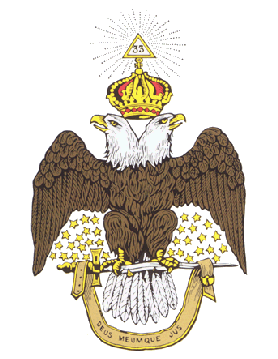
The Ancient and Accepted Scottish Rite of Freemasonry is a Rite within the broader context of Freemasonry. It is the most widely practiced Rite in the world. In some parts of the world, and in the Droit Humain, it is a concordant body and oversees all degrees from the 1st to 33rd degrees, while in other areas, a Supreme Council oversees the 4th to 33rd degrees.
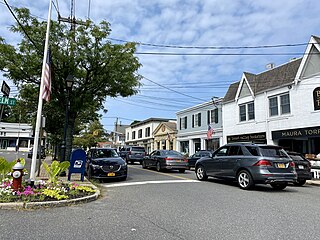
Locust Valley is a hamlet and census-designated place (CDP) located in the Town of Oyster Bay in Nassau County, on the North Shore of Long Island, in New York, United States. The population was 3,406 at the 2010 census.

Lloyd Harbor is a village in the Town of Huntington in Suffolk County, on the North Shore of Long Island, in New York, United States. As of the 2010 census, the village's population was 3,660.

Oyster Bay is a hamlet and census-designated place (CDP) within the town of Oyster Bay on the North Shore of Long Island in Nassau County in the state of New York, United States. The hamlet is also the site of a station on the Oyster Bay Branch of the Long Island Rail Road and the eastern termination point of that branch of the railroad.

The North Shore of Long Island is the area along the northern coast of New York's Long Island bordering Long Island Sound. Known for its extreme wealth and lavish estates, the North Shore exploded into affluence at the turn of the 20th century, earning it the nickname the Gold Coast. Historically, this term refers to the affluent coastline neighborhoods of the towns of North Hempstead and Oyster Bay in Nassau County and Huntington in Suffolk County. Some definitions may also include the parts of Smithtown that face the Sound. The region is also largely coextensive with the Gold Coast region of Long Island, though this region excludes Smithtown, as the easternmost Gold Coast mansion is the Geissler Estate, located just west of Indian Hills Country Club in the Fort Salonga section of Huntington.
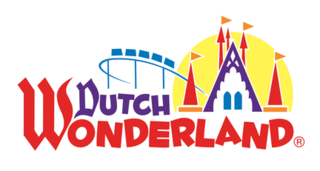
Dutch Wonderland is a 48-acre (19 ha) theme park just east of Lancaster, Pennsylvania in East Lampeter Township, appealing primarily to families with small children. The park's theme is a "Kingdom for Kids." The entrance to the park has a stone imitation castle façade, which was built by Earl Clark, a potato farmer, before he opened the park in 1963.

The Town of Oyster Bay is the easternmost of the three towns that make up Nassau County, New York, United States. Part of the New York metropolitan area, it is the only town in Nassau County to extend from the North Shore to the South Shore of Long Island. As of the 2020 census, it had a population of 301,332, Making it the 5th most populous city or town in the state.

Oyster Bay is the terminus on the Oyster Bay Branch of the Long Island Rail Road. The station is located off Shore Avenue between Maxwell and Larabee Avenues. It is a sheltered concrete elevated platform that stands in the shadows of the original station, which was accessible from the ends of Maxwell, Audrey, and Hamilton Avenues. Both stations exist along the south side of Roosevelt Park.
Charles Albert Floyd was an American lawyer and politician who served one term as a U.S. Representative from New York from 1841 to 1843.

This is a chronology of the formation of "regular" or "mainstream" Masonic Grand Lodges in North America, descending from the Premier Grand Lodge of England or its rival, the Antient Grand Lodge of England. A Grand Lodge is the governing body that supervises "Craft" Freemasonry in a particular jurisdiction or geographical area.
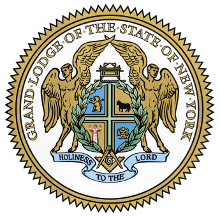
The Grand Lodge of New York is the largest and oldest independent organization of Freemasons in the U.S. state of New York. The headquarters of the Grand Lodge is the Grand Lodge Building located at 23rd Street in Manhattan.
Theodore Roosevelt spent his first summer in Oyster Bay with his family in 1874. Through the ensuing years as he rose to power, Oyster Bay would frequently serve as backdrop and stage on which many of his ambitions were realized. Several places connected to Theodore Roosevelt in his lifetime remain, while others have been lost. A number of efforts to memorialize Roosevelt in Oyster Bay have been made since his death in 1919.
The Oyster Bay History Walk is a path through downtown Oyster Bay, New York that leads the walker to 30 historic sites. It is a 1-mile loop and is the first certified American Heart Association Start! Walking Path on Long Island.

The Oyster Bay Bank Building was constructed in 1891 and served as the first bank in Oyster Bay on Long Island, New York. In addition to the bank, other users have included the Masons of Matinecock Lodge, Theodore Roosevelt while he served as Governor of New York, and architect Edward Durrell Stone. Today this building is a featured site on the Oyster Bay History Walk audio walking tour.
North Roslyn is a closed rail station along the Oyster Bay Branch of the Long Island Rail Road, located in Nassau County, on Long Island, in New York, United States.

David Carll was a 19th-century American shipbuilder. He was well known for building fast and seaworthy yachts and schooners. He specialized in shallow draft Centreboard schooners. The David Carll's shipyard was the first commercial shipyard built in City Island. He built the popular schooners David Carll, Vesta,Resolute, and Ambassadress. His brother, Jesse Carll had a successful shipyard in Northport, New York.
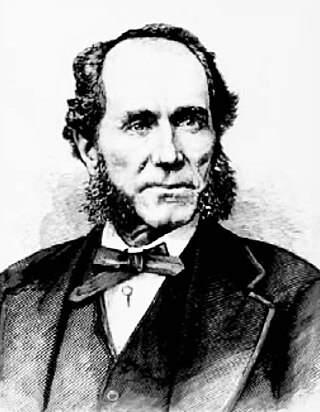
Jesse Carll was a 19th century American shipbuilder in Northport, New York. He was one of the prominent shipbuilders of Long Island and known for building fast and seaworthy yachts and schooners. Carll built the popular schooner pilot-boat Jesse Carll, named in his honor. He died on October 24, 1902, in Northport, at 72 years old. His brother, had the David Carll's shipyard, which was the first commercial shipyard built in City Island.
Freemasonry in the United States is the history of Freemasonry as it was introduced from Britain and continues as a major secret society to the present day. It is a fraternal order that brings men together to gain friendship and opportunity for advancement and community progress. It has been nonpolitical except for a period around 1820 when it came under heavy attack in the Northeast. That attack reduced membership, but it recovered and grew after 1850. Growth ended in the late 20th century and membership has declined.















